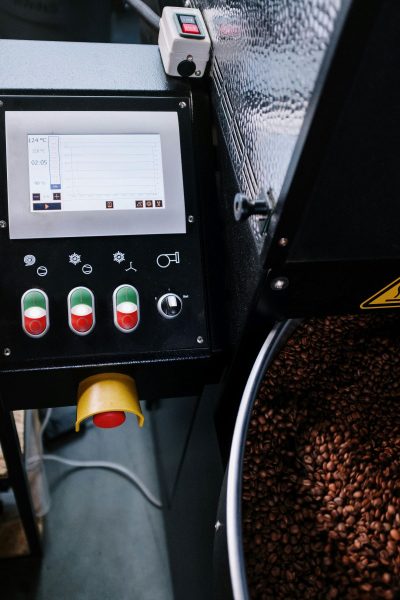
The quality of your final roasted product begins long before the beans ever reach your roasting machine. The selection of green, unroasted coffee beans is perhaps the most crucial decision a roastery makes, setting the foundation for everything that follows. Whether you’re an established roastery or just starting out, understanding how to evaluate and purchase high-quality green coffee can make the difference between producing mediocre coffee and creating exceptional brews that keep customers coming back. This guide will walk you through everything you need to know about selecting the finest green coffee beans for your roastery.
Understanding Coffee Bean Origins and Terroir
The journey to exceptional coffee begins with understanding where your beans come from. Coffee, like wine, expresses terroir – the environmental factors including soil, climate, and elevation that influence its flavor profile.
Regional Flavor Profiles
Different coffee-growing regions produce beans with distinctive flavor characteristics:
- Central and South American coffees (Colombia, Guatemala, Costa Rica) typically offer balanced acidity, medium body, and notes of chocolate and nuts
- African coffees (Ethiopia, Kenya) often present bright acidity with floral, fruity, and berry-like flavors
- Asian coffees (Indonesia, Vietnam) frequently deliver full-bodied cups with earthy, spicy, and woody undertones
Elevation Matters
Coffee grown at higher elevations (typically above 1,200 meters) generally develops more complex flavor profiles due to slower maturation. These high-altitude beans, often labeled “Strictly High Grown” (SHG) or “Strictly Hard Bean” (SHB), tend to be denser and more desirable for specialty roasters seeking distinctive flavor characteristics.
Coffee Bean Varieties and Processing Methods
The genetic variety of the coffee plant and how the beans are processed after harvest significantly impact flavor potential.
Common Arabica Varieties
Each variety brings unique characteristics to the cup:
- Typica: The original Arabica variety, known for clean, sweet flavors
- Bourbon: Offers increased sweetness and complexity compared to Typica
- Gesha/Geisha: Highly prized for its exceptional floral and tea-like qualities
- Pacamara: Known for its large bean size and complex flavor profile
- SL28 and SL34: Kenyan varieties celebrated for bright acidity and full body
Processing Methods and Their Impact
Processing refers to how the coffee cherry’s fruit is removed from the seed:
Washed/Wet Processing: Removes fruit before drying, resulting in clean, bright flavors that showcase the bean’s inherent characteristics
Natural/Dry Processing: Dries the entire cherry with the bean inside, creating fruity, sweet, and sometimes fermented notes
Honey/Pulped Natural Processing: Removes the skin but leaves some fruit mucilage on the bean during drying, producing a balance between washed and natural methods
Grading Systems and Classifications
Understanding coffee grading helps roasteries make informed purchasing decisions based on objective quality measures.
Size Grading
Screen size (measured in 1/64th of an inch) indicates bean size consistency. Higher numbers generally indicate larger beans, which often roast more evenly. Common classifications include:
- Screen 15: Small beans
- Screen 17-18: Medium beans (common specialty grade)
- Screen 19+: Large beans (often commanding premium prices)
Defect Counting
Specialty coffee is evaluated by counting defects in a sample. The Specialty Coffee Association (SCA) standard permits no primary defects and a maximum of 5 secondary defects in a 300-gram sample for specialty grade classification.
Evaluating Physical Characteristics
Visual inspection provides valuable insights into a coffee’s potential quality before sample roasting.
Color and Appearance
Healthy green coffee should have a consistent color appropriate for its processing method:
- Washed coffees typically appear blue-green
- Natural processed coffees often have a yellowish or brownish tint
- Aged coffees develop a pale yellow or faded appearance
Inconsistent coloration may indicate improper processing, storage issues, or bean age.
Moisture Content and Density
Proper moisture content (typically 10-12%) ensures optimal roasting development and storage stability. Coffee that’s too dry may roast too quickly and taste flat, while beans with excessive moisture risk mold development and premature aging.
Bean density, though harder to measure precisely without equipment, indicates potential flavor development. Dense beans (often from higher elevations) generally offer more complex flavor profiles when properly roasted.
Sample Roasting and Cupping
No amount of theory replaces the practical evaluation of coffee through sample roasting and cupping.
The Sample Roasting Process
Sample roasting should be standardized to ensure fair comparison between different coffees:
- Roast 100-200g samples
- Use a light-medium roast profile to highlight bean characteristics
- Allow at least 24 hours rest before cupping
- Maintain detailed records of each sample’s roasting behavior
Professional Cupping Protocol
Following SCA cupping protocols provides a systematic approach to evaluation:
- Grind samples immediately before evaluation
- Use 8.25g coffee per 150ml water
- Assess dry fragrance before adding water
- Break the crust after 4 minutes and evaluate aroma
- Taste when temperature cools to approximately 160°F (71°C)
- Evaluate flavor, acidity, body, balance, aftertaste, and overall impression
Understanding Flavor Profiles and Quality Attributes
Developing a vocabulary and framework for describing coffee flavors helps roasteries communicate about quality internally and with suppliers.
The Coffee Taster’s Flavor Wheel
The SCA/World Coffee Research Flavor Wheel provides a comprehensive vocabulary for describing coffee attributes, from broad categories (fruity, sweet, floral) to specific descriptors (blackberry, maple syrup, jasmine).
Key Quality Indicators
Beyond specific flavor notes, evaluate these fundamental attributes:
- Sweetness: High-quality coffees present natural sweetness
- Acidity: The brightness or liveliness of coffee (not sourness)
- Body: The tactile weight or mouthfeel
- Balance: How well all elements work together
- Clean cup: Absence of defects or taints
- Aftertaste: The lingering impression after swallowing
Seasonal Buying and Crop Cycles
Coffee is an agricultural product with distinct harvesting seasons varying by origin. Understanding these cycles helps roasteries plan purchasing strategies.
Major Harvesting Patterns
- October-March: Central America, Colombia, Ethiopia, Kenya
- April-September: Brazil, Peru, Indonesia
The Importance of Fresh Crop
Green coffee, while more stable than roasted coffee, still ages and degrades over time. Beans past 12-18 months from harvest often show diminishing flavor qualities. Working with importers like Intercontinental Coffee Trading who maintain strict inventory rotation ensures access to fresh crop coffees year-round.
Building Relationships with Suppliers
Consistent coffee quality depends heavily on strong relationships throughout the supply chain.
Direct Trade vs. Importer Relationships
While direct trade relationships with producers can be rewarding, most roasteries benefit from partnerships with established importers who:
- Handle complex logistics and customs requirements
- Provide access to diverse origins and producers
- Manage quality control and consistency
- Buffer seasonal availability challenges
- Offer financing options and inventory management
What to Look for in a Green Coffee Partner
The ideal green coffee supplier should provide:
- Transparency about origins and pricing
- Comprehensive sample programs
- Consistent quality control
- Reliable logistics and delivery
- Educational resources and cupping opportunities
Storage and Inventory Management
Proper storage extends green coffee shelf life and maintains quality until roasting.
Optimal Storage Conditions
Store green coffee in a clean environment with:
- Temperature between 60-75°F (15-24°C)
- Relative humidity between 50-60%
- Protection from direct sunlight
- Good airflow
- Isolation from strong odors or contaminants
Inventory Management Best Practices
Implement systems to track:
- Purchase dates and arrival times
- Crop years and processing details
- Cupping scores and notes
- Usage rates and projections
- Reorder thresholds
Sustainability and Ethical Sourcing
Today’s coffee consumers increasingly value sustainability and ethical sourcing, making these considerations important for roasteries.
Certifications and Their Meaning
Common certifications include:
- Fair Trade: Focuses on minimum pricing and community development
- Organic: Verifies production without synthetic chemicals
- Rainforest Alliance: Emphasizes environmental protection and worker welfare
- Bird Friendly: Certifies shade-grown practices that preserve bird habitats
- Direct Trade: Not formally certified but indicates direct relationships with producers
Beyond Certifications
While certifications provide useful frameworks, many exceptional coffees come from producers working outside certification systems. Partnering with Intercontinental Coffee Trading gives roasteries access to both certified coffees and those from producers implementing sustainable practices without formal certification.
Final Recommendations for Roasteries
Developing a systematic approach to green coffee purchasing sets your roastery up for long-term success.
Creating Your Purchasing Strategy
- Define your roastery’s flavor philosophy and target profiles
- Establish a regular cupping routine for potential purchases
- Develop relationships with reliable suppliers
- Build a balanced inventory with consistent staples and rotating seasonal offerings
- Document all evaluations for future reference
- Invest in proper storage infrastructure
- Calculate costs carefully, including shipping and potential waste
Working with Intercontinental Coffee Trading
For roasteries seeking exceptional green coffee beans from around the world, Intercontinental Coffee Trading offers unparalleled selection, quality control, and supply chain transparency. Their team of experienced coffee professionals provides personalized consultation to help roasteries find the perfect beans for their specific needs and flavor profiles.
To explore their live inventory of premium green coffees or schedule a consultation with their sourcing team, visit Intercontinental Coffee Trading’s website today and elevate your roastery’s offerings with truly exceptional beans.
By implementing these guidelines and working with trusted partners, roasteries can consistently source high-quality green coffee beans that form the foundation of exceptional roasted products. Remember that green coffee selection is both an art and a science – combining objective quality measures with your roastery’s unique flavor preferences and business requirements.
